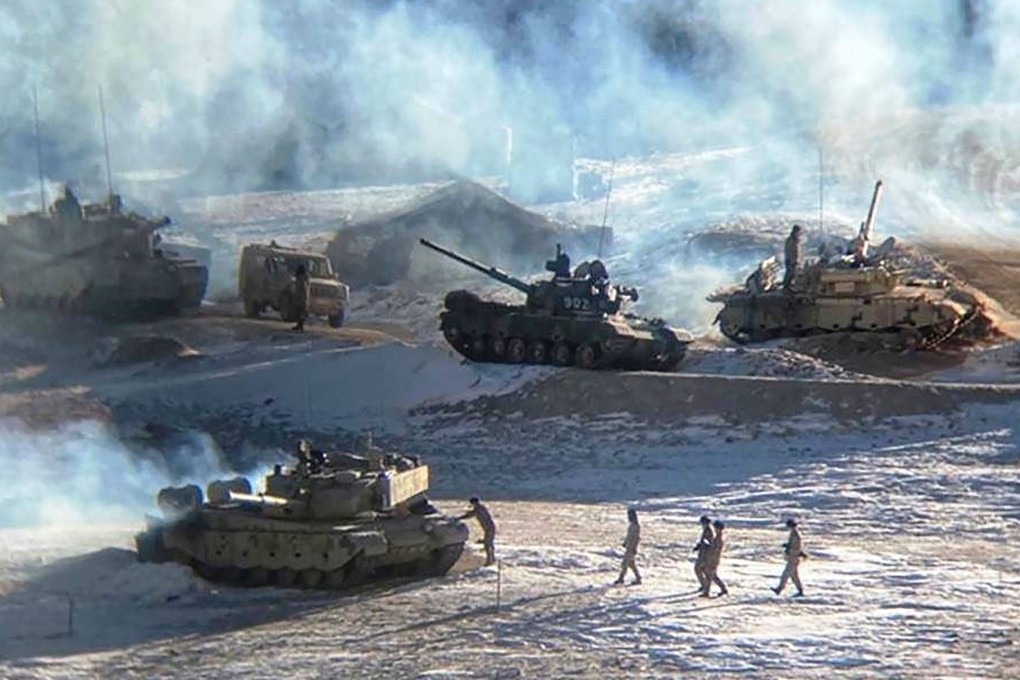Advertisement
Asian Angle | Coronavirus, poverty, Pakistan: India is under siege, but not ready for war with China
- India is besieged by Covid-19, growing poverty, cratering GDP growth and tensions on its borders with both China and Pakistan
- Its controversial embrace of the Quad with the US, Japan and Australia should be seen in this light: it is shield, more than sword
Reading Time:4 minutes
Why you can trust SCMP
99+

The Hindu nationalist BJP (Bharatiya Janata Party) government in India led by Prime Minister Narendra Modi marked the seventh anniversary of its ascent to power a little over a month ago without any of its customary fanfare. The subdued air around the government’s conduct reveals a country in many ways under siege.
First of all, the deadly coronavirus has besieged India, with the authorities’ response to a devastating second wave bordering between the inept and the irresponsible. So far, close to 400,000 people have lost their lives, though unofficial estimates place the toll much higher. More than 30 million people have been infected; many have had to struggle for basic supplies of medicines and oxygen in the last three months, as hospitals overflowed and the health-care system buckled under the pressure. Only 4 per cent of Indians are fully vaccinated, the government having failed to order sufficient doses even while it was boasting that it had done the world a favour by preventing a major calamity.
Next, the economy is under siege. The GDP growth rate has cratered, thanks in part (but not only) to the draconian nationwide lockdown imposed in March 2020 and fitfully renewed since. Some 75 million people were pushed below the poverty line in 2020 and 97 per cent of Indians reported becoming poorer during the last year. Unemployment figures are at the highest levels ever recorded. Tens of thousands of micro, small and medium enterprises (especially those employing fewer than twenty people) have been forced to close. India’s middle class is estimated to have shrunk by 32 million in the last year. It is clear that both lives and livelihoods have been in jeopardy since the Modi government’s re-election in May 2019.
Advertisement
To make matters worse, tensions on the border with China show no signs of abating. China, after advancing across disputed territory in Ladakh last spring, and provoking a military encounter that took the lives of twenty Indian soldiers a year ago, has failed to disengage. China’s dogged refusal over eleven rounds of infructuous talks to withdraw its soldiers from positions occupied in 2020 has left India’s insistence on the restoration of the status quo ante looking increasingly forlorn.
With enduring hostility with China seeming inescapable, New Delhi has had to contemplate the looming threat of a China-Pakistan axis that could squeeze it on two fronts. The progress of China’s tight economic bonding with Pakistan through the Belt and Road Initiative’s largest investment, the US$90 billion China-Pakistan Economic Corridor, has deepened Beijing’s considerable stakes in that country. Pakistan, India’s hostile separated sibling state, has long nurtured a desire to “bleed India with a thousand cuts”, financing and deploying terrorists across the border. India has been able to deal with it firmly, while keeping China at bay through extensive trade and economic contacts and unassertive “peace diplomacy”. But now, with Sino-Indian peace in a shambles on the snowy wastes of Ladakh, Pakistan could be emboldened by the new tensions to pursue its own agenda, confronting India with the prospect of a “two-front war” it is not prepared to conduct.
Advertisement
Amid these mounting negatives, New Delhi has reacted by trying to calm its western front, pursuing secret “backchannel” talks with Pakistani security officials to ease the tensions between the two nations and neutralise the prospect of conflict. (UAE diplomats have been quoted as confirming having facilitated these contacts). A February 2021 ceasefire along the Line of Control that separates the two countries’ forces in disputed Kashmir has held for four months, permitting an atmosphere of near-normalcy for residents of the area.
Advertisement
Select Voice
Choose your listening speed
Get through articles 2x faster
1.25x
250 WPM
Slow
Average
Fast
1.25x

